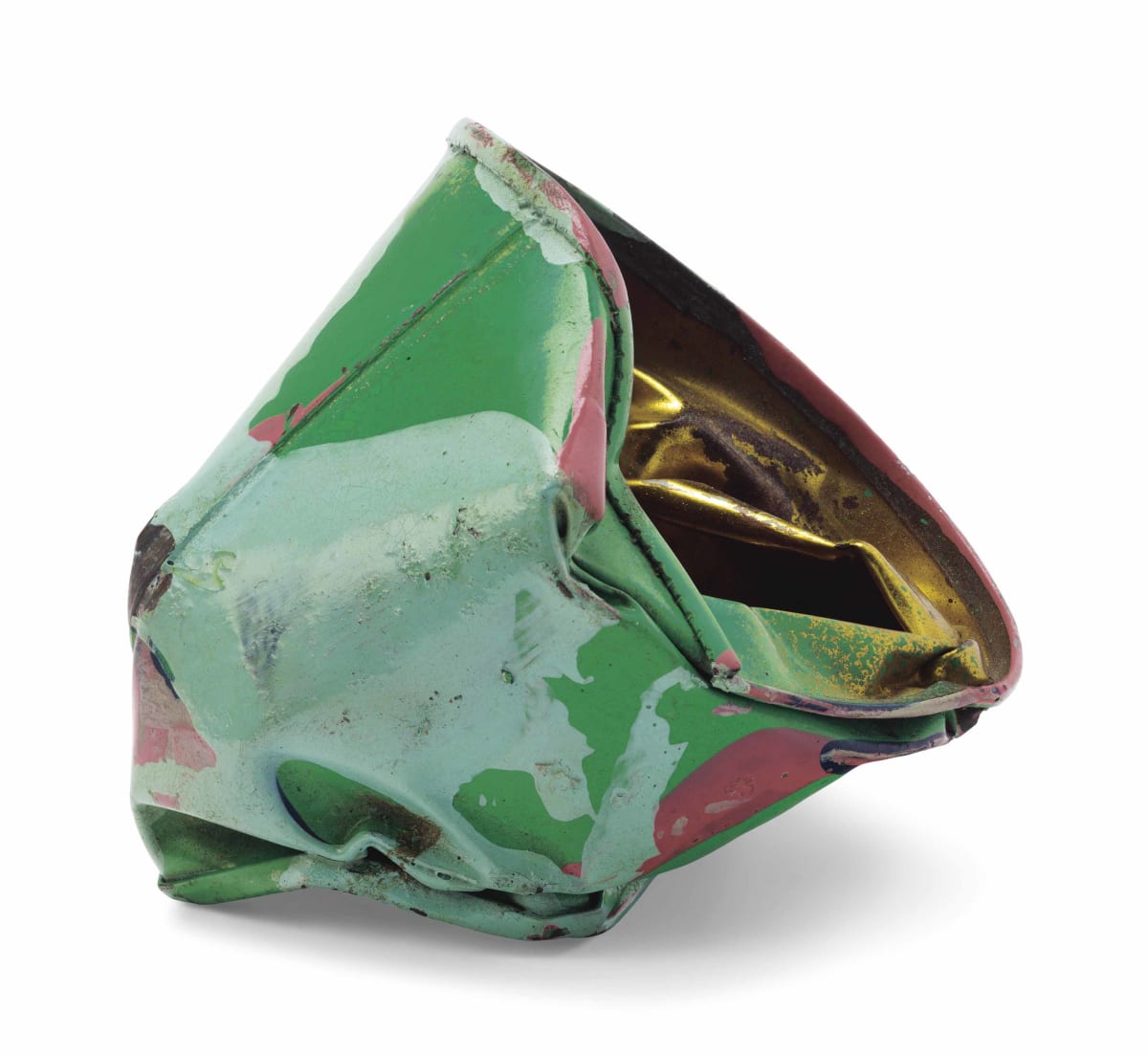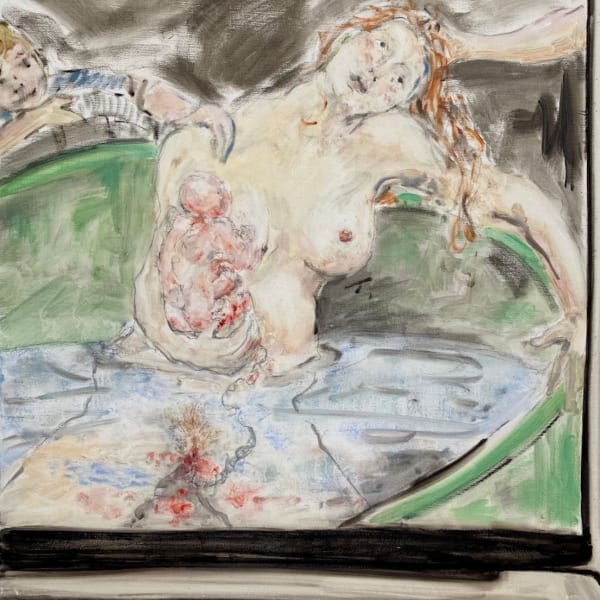
The tension between the crushed metal and the slick newness of the paint is a hallmark of Chamberlain’s work—exploring the intersection of mechanical perfection and the inevitable decay of new materials.
Since 1953, when he renounced representational art, John Chamberlain has created his distinctive, innovative sculptures that challenge traditional ideas of media and composition and that have become central to the story of twentieth-century sculpture.
Born in Rochester, Indiana, in 1927, Chamberlain served in the Navy during the Second World War. After his service, he pursued his art studies at the Art Institute of Chicago, and then at the University of Illinois and Black Mountain College. After working with welded metal in the mid-1950s and becoming influenced by David Smith, Chamberlain began using the bodies of wrecked automobiles by 1958. The first of these, which included Ford parts that he found on the property of painter Larry Rivers, attracted immediate attention. He showed them at the Hansa Gallery in 1959; he went on to exhibit with Martha Jackson in 1960 and Leo Castelli in 1962. In the 1960s, he continued exploring the possibilities of industrial and other non-traditional mediums: formica, crushed galvanized metal, paper bags, and melted plexiglass.
Since 1953, when he renounced representational art, John Chamberlain has created his distinctive, innovative sculptures that challenge traditional ideas of media and composition and that have become central to the story of twentieth-century sculpture.
Born in Rochester, Indiana, in 1927, Chamberlain served in the Navy during the Second World War. After his service, he pursued his art studies at the Art Institute of Chicago, and then at the University of Illinois and Black Mountain College. After working with welded metal in the mid-1950s and becoming influenced by David Smith, Chamberlain began using the bodies of wrecked automobiles by 1958. The first of these, which included Ford parts that he found on the property of painter Larry Rivers, attracted immediate attention. He showed them at the Hansa Gallery in 1959; he went on to exhibit with Martha Jackson in 1960 and Leo Castelli in 1962. In the 1960s, he continued exploring the possibilities of industrial and other non-traditional mediums: formica, crushed galvanized metal, paper bags, and melted plexiglass.
In 1971, he began working with crumpled industrial aluminum foil painted in the vibrant glossy colors of automobiles. The tension between the crushed metal and the slick newness of the paint is a hallmark of Chamberlain’s work—exploring the intersection of mechanical perfection and the inevitable decay of new materials.
By the early 1970s, his career was well established. Chamberlain received a Guggenheim Fellowship in 1966 and a solo exhibition at the Guggenheim Museum in 1971. He also had a solo show at the Cleveland Museum of Art in 1967. He went on to exhibit widely and consistently from the 1960s on. His work is included in most major collections of American art.













